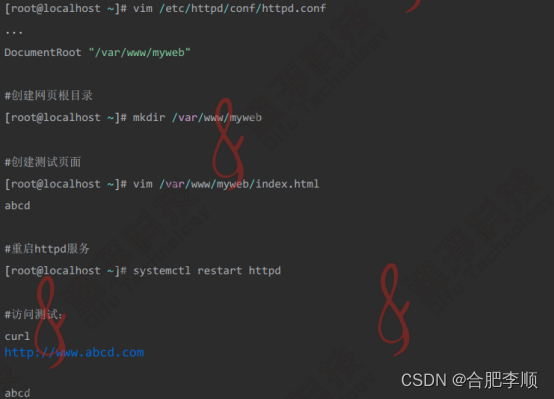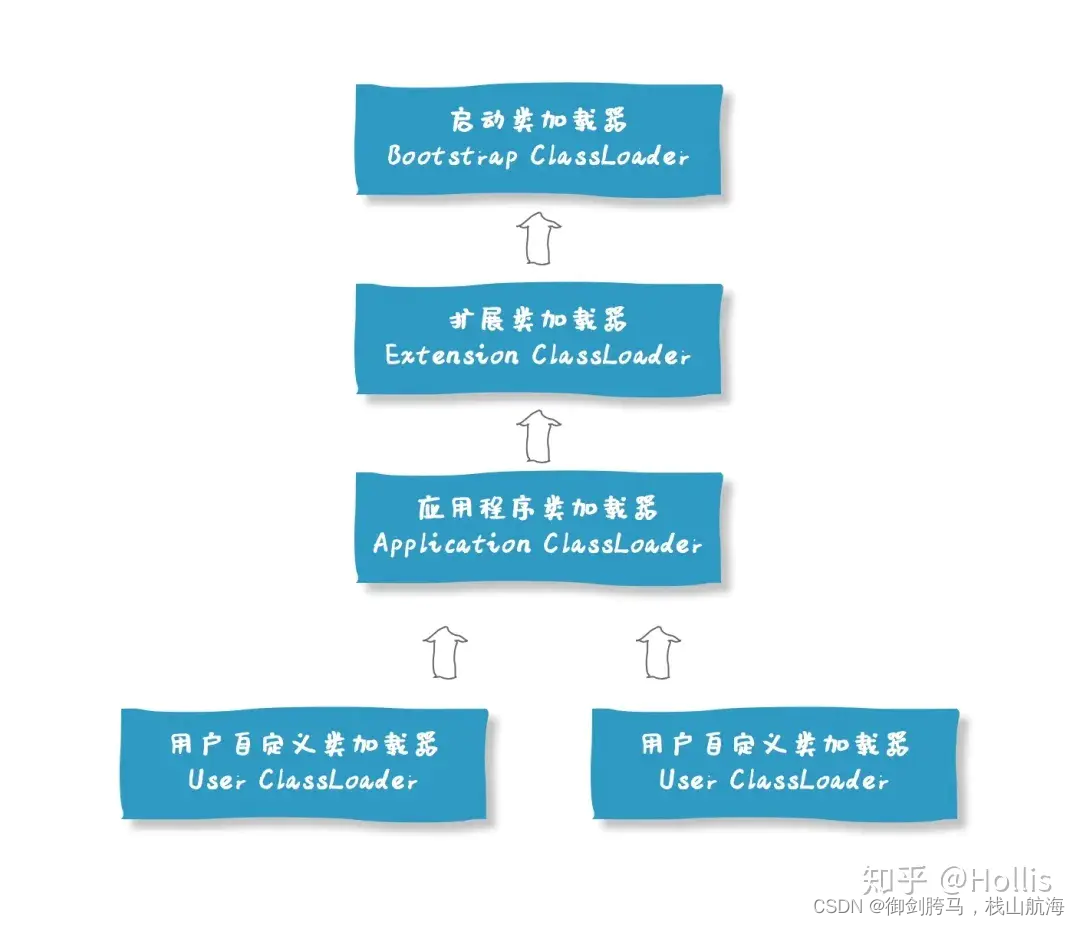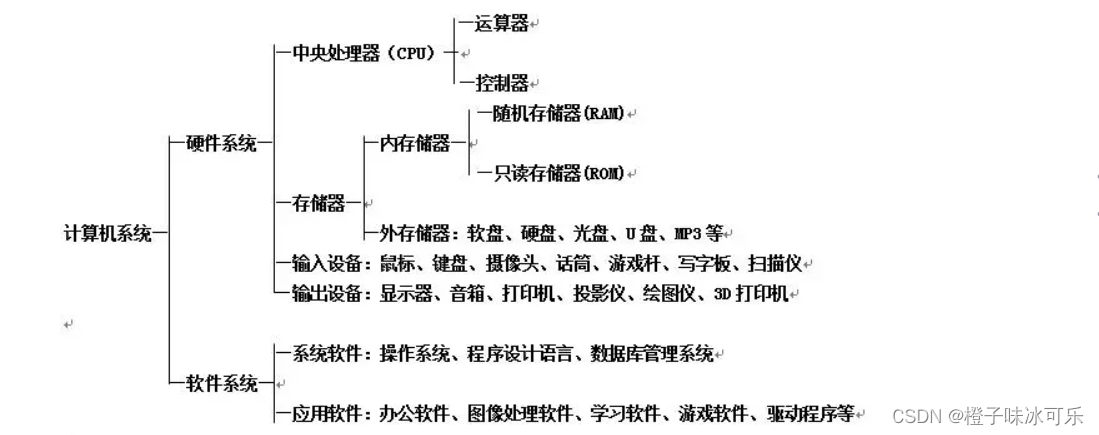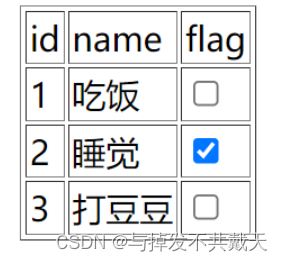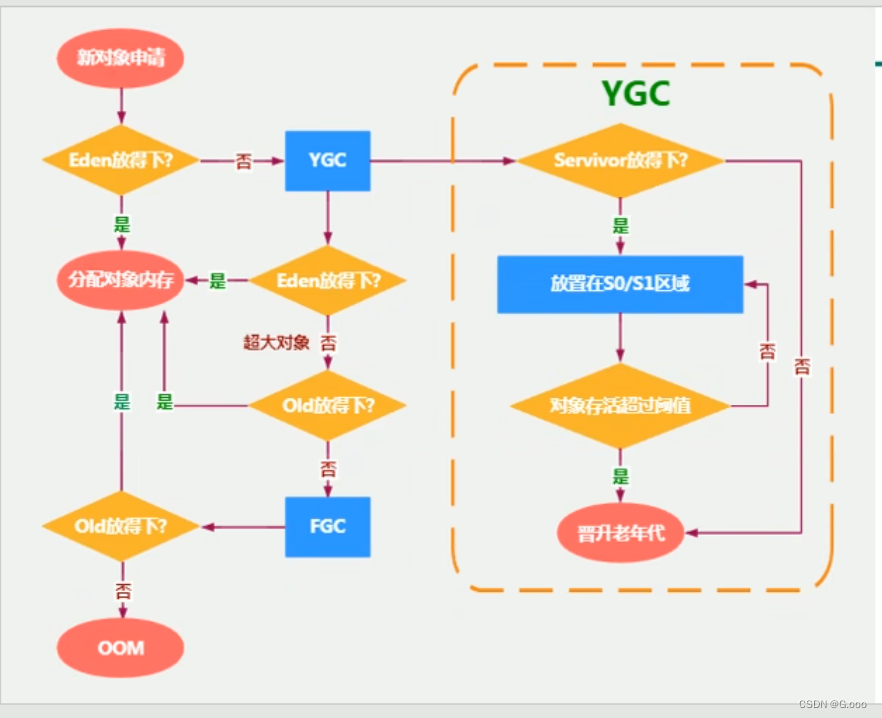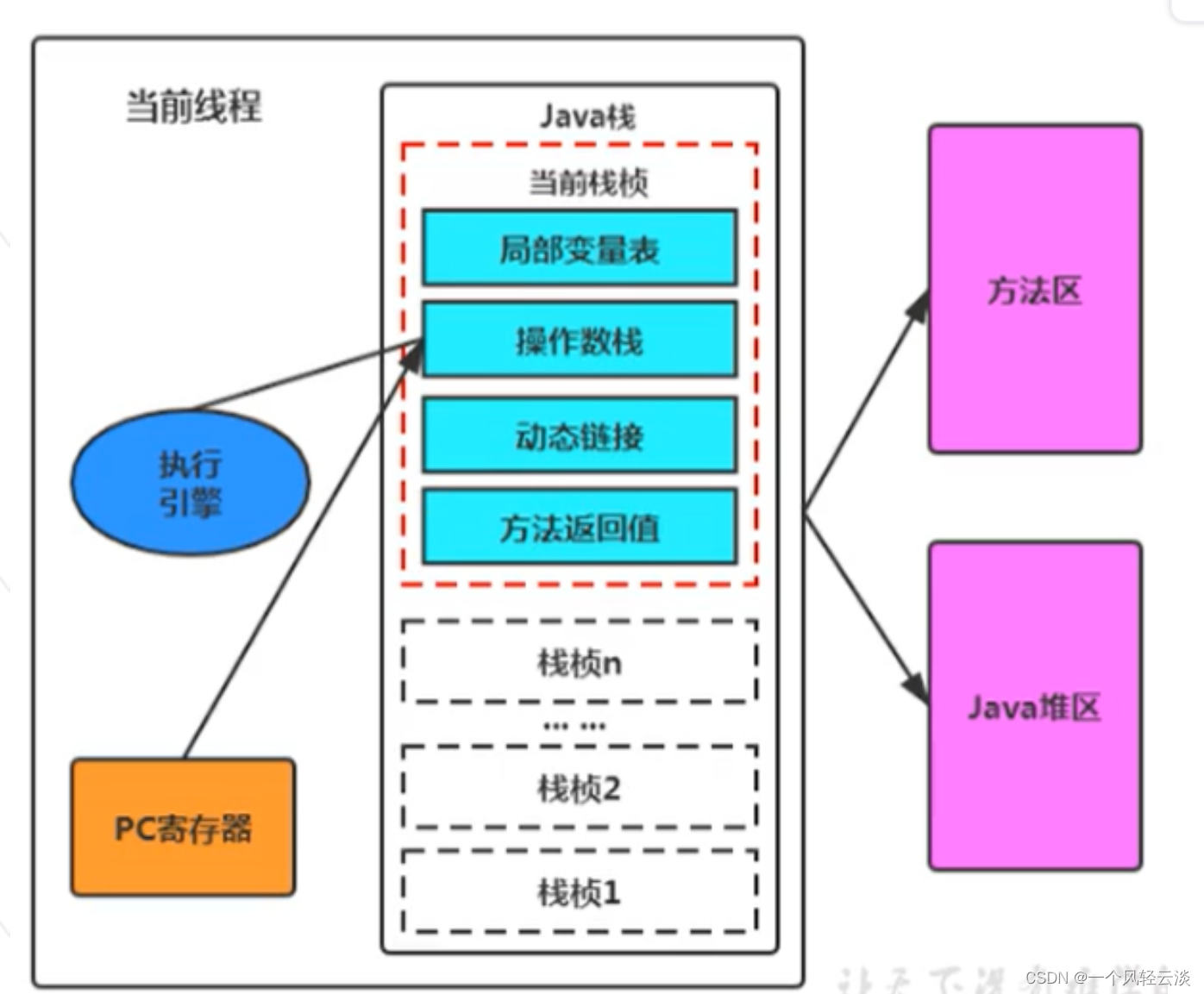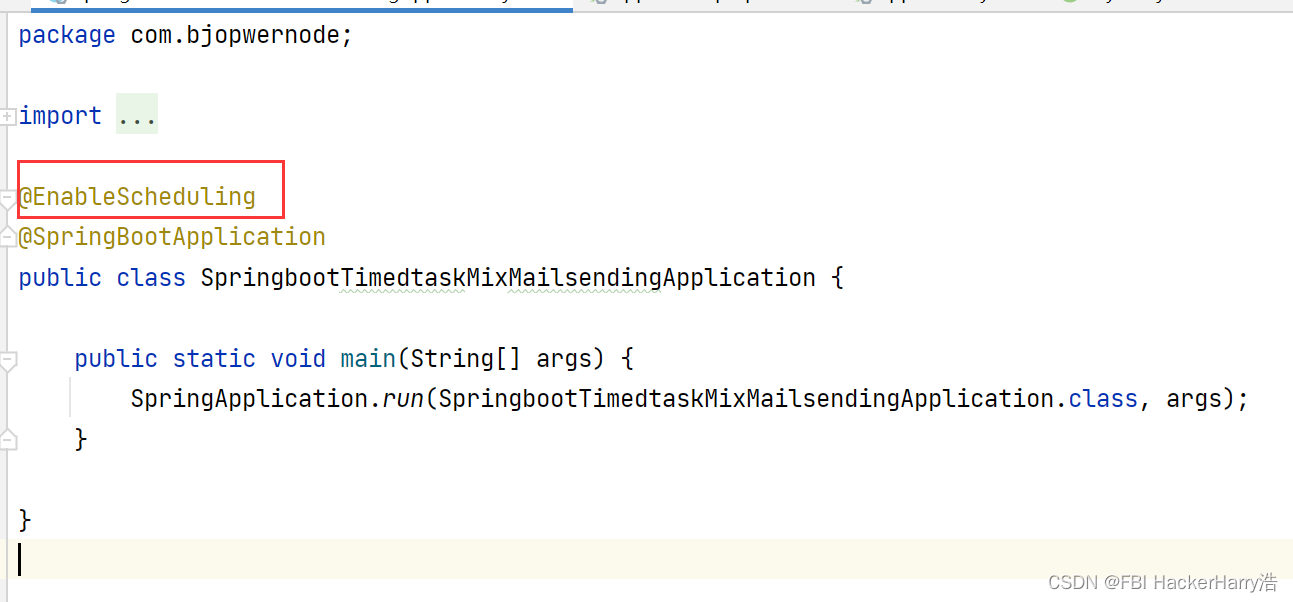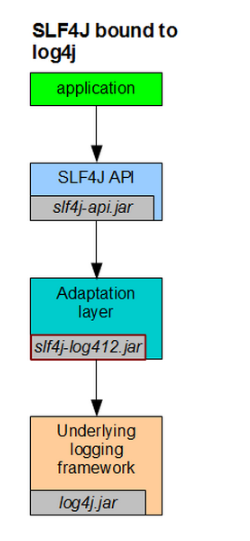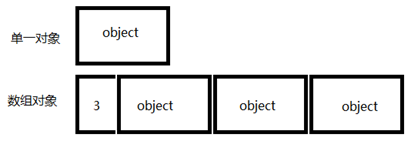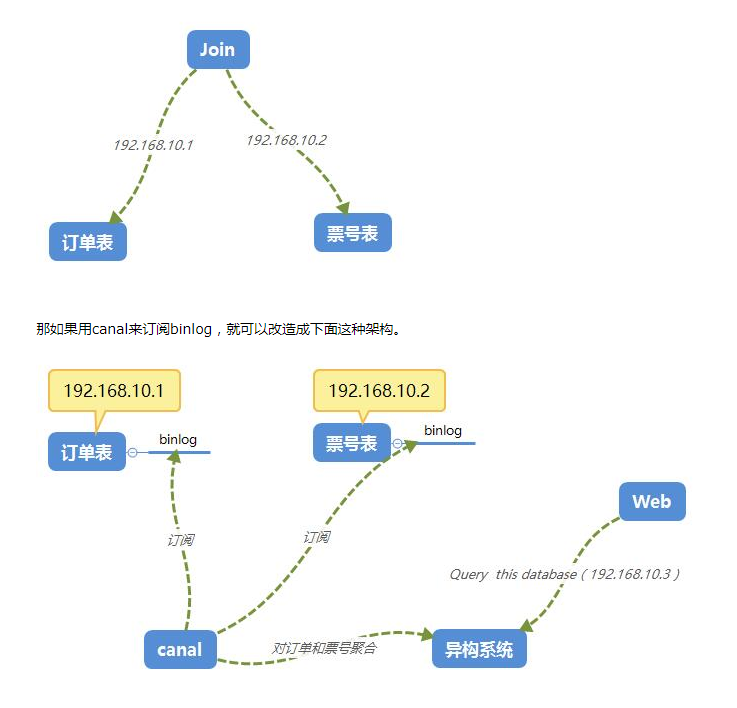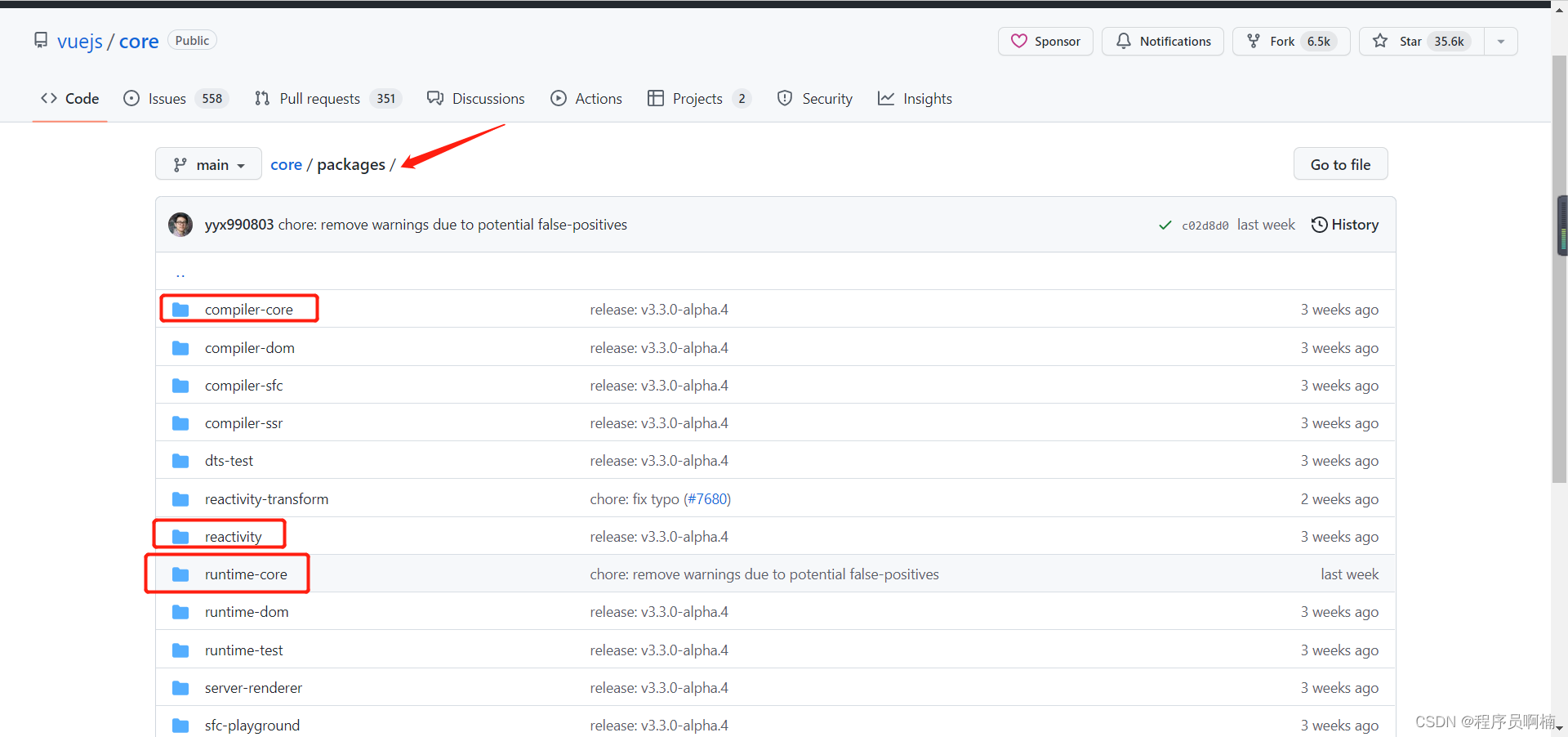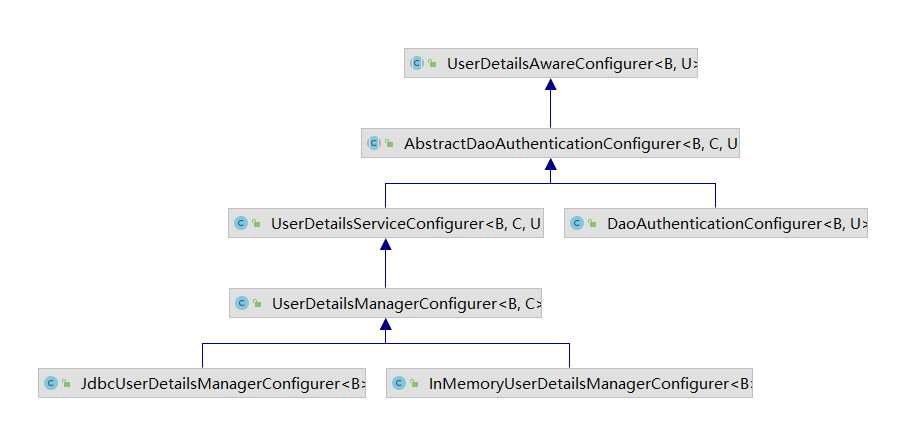IoC使软件组件松耦合。AOP让你能够捕捉系统中经常使用的功能,把它转化成组件。
AOP(Aspect Oriented Programming):面向切面编程,面向方面编程。(AOP是一种编程技术)
AOP是对OOP的补充延伸。
AOP底层使用的就是动态代理来实现的。
Spring的AOP使用的动态代理是:JDK动态代理 + CGLIB动态代理技术。Spring在这两种动态代理中灵活切换,如果是代理接口,会默认使用JDK动态代理,如果要代理某个类,这个类没有实现接口,就会切换使用CGLIB。当然,你也可以强制通过一些配置让Spring只使用CGLIB。
1 AOP介绍
一般一个系统当中都会有一些系统服务,例如:日志、事务管理、安全等。这些系统服务被称为:交叉业务
这些交叉业务几乎是通用的,不管你是做银行账户转账,还是删除用户数据。日志、事务管理、安全,这些都是需要做的。
如果在每一个业务处理过程当中,都掺杂这些交叉业务代码进去的话,存在两方面问题:
第一:交叉业务代码在多个业务流程中反复出现,显然这个交叉业务代码没有得到复用。并且修改这些交叉业务代码的话,需要修改多处。
第二:程序员无法专注核心业务代码的编写,在编写核心业务代码的同时还需要处理这些交叉业务。
使用AOP可以很轻松的解决以上问题。
AOP的思想:

用一句话总结AOP:将与核心业务无关的代码独立的抽取出来,形成一个独立的组件,然后以横向交叉的方式应用到业务流程当中的过程被称为AOP。
AOP的优点:
● 第一:代码复用性增强。
● 第二:代码易维护。
● 第三:使开发者更关注业务逻辑。
2 AOP的七大术语
public class UserService{
public void do1(){
System.out.println("do 1");
}
public void do2(){
System.out.println("do 2");
}
public void do3(){
System.out.println("do 3");
}
public void do4(){
System.out.println("do 4");
}
public void do5(){
System.out.println("do 5");
}
// 核心业务方法
public void service(){
try{
// Joinpoint连接点
do1(); // Pointcut切点
// Joinpoint连接点
do2(); // Pointcut切点
// Joinpoint连接点
do3(); // Pointcut切点
// Joinpoint连接点
do5(); // Pointcut切点
// Joinpoint连接点
} catch (Exception e){
// Joinpoint连接点
} finally {
// Joinpoint连接点
}
}
}
// 1. 连接点(Joinpoint)描述的是位置
// 2. 切点(Pointcut)本质上就是方法(真正织入切面的那个方法叫做切点)
// 3. 通知(Advice),通知又叫做增强。就是具体增强的那个代码
// 例如: 具体的事务代码, 日志代码, 安全代码
// 具体的这个代码是通知
// 通知描述的是代码
// 4. 切面: 切点 + 通知
- 连接点 Joinpoint
- 在程序的整个执行流程中,可以织入切面的位置。方法的执行前后,异常抛出之后等位置。
- 切点 Pointcut
- 在程序执行流程中,真正织入切面的方法。(一个切点对应多个连接点)
- 通知 Advice
- 通知又叫增强,就是具体你要织入的代码。
- 通知包括:
- 前置通知
- 后置通知
- 环绕通知
- 异常通知
- 最终通知
- 切面 Aspect
- 切点 + 通知就是切面。
- 织入 Weaving
- 把通知应用到目标对象上的过程。
- 代理对象 Proxy
- 一个目标对象被织入通知后产生的新对象。
- 目标对象 Target
- 被织入通知的对象。

- 被织入通知的对象。
3 切点表达式
切点表达式用来定义通知(Advice)往哪些方法上切入。
切入点表达式语法格式:
execution([访问控制权限修饰符] 返回值类型 [全限定类名]方法名(形式参数列表) [异常])
访问控制权限修饰符:
- 可选项。
- 没写,就是4个权限都包括。
- 写public就表示只包括公开的方法。
返回值类型:
- 必填项。
- * 表示返回值类型任意。
全限定类名:
- 可选项。
- 两个点“..”代表当前包以及子包下的所有类。
- 省略时表示所有的类。
方法名:
- 必填项。
- *表示所有方法。
- set*表示所有的set方法。
形式参数列表:
- 必填项
- () 表示没有参数的方法
- (..) 参数类型和个数随意的方法
- (*) 只有一个参数的方法
- (*, String) 第一个参数类型随意,第二个参数是String的。
异常:
- 可选项。
- 省略时表示任意异常类型。
理解以下的切点表达式:
service包下所有的类中以delete开始的所有方法
execution(public * com.powernode.mall.service.*.delete*(..))
mall包下所有的类的所有的方法
execution(* com.powernode.mall..*(..))
所有类的所有方法
execution(* *(..))
4 使用Spring的AOP
Spring对AOP的实现包括以下3种方式:
- 第一种方式:Spring框架结合AspectJ框架实现的AOP,基于注解方式。
- 第二种方式:Spring框架结合AspectJ框架实现的AOP,基于XML方式。
- 第三种方式:Spring框架自己实现的AOP,基于XML配置方式。
使用Spring+AspectJ的AOP需要引入依赖
<dependencies>
<!--spring context依赖-->
<dependency>
<groupId>org.springframework</groupId>
<artifactId>spring-context</artifactId>
<version>6.0.2</version>
</dependency>
<!--spring aspects依赖-->
<dependency>
<groupId>org.springframework</groupId>
<artifactId>spring-aspects</artifactId>
<version>6.0.2</version>
</dependency>
</dependencies>
Spring配置文件中添加context命名空间和aop命名空间
<?xml version="1.0" encoding="UTF-8"?>
<beans xmlns="http://www.springframework.org/schema/beans"
xmlns:xsi="http://www.w3.org/2001/XMLSchema-instance"
xmlns:context="http://www.springframework.org/schema/context"
xmlns:aop="http://www.springframework.org/schema/aop"
xsi:schemaLocation="http://www.springframework.org/schema/beans http://www.springframework.org/schema/beans/spring-beans.xsd
http://www.springframework.org/schema/context http://www.springframework.org/schema/context/spring-context.xsd
http://www.springframework.org/schema/aop http://www.springframework.org/schema/aop/spring-aop.xsd">
</beans>
1 基于AspectJ的AOP注解式开发
定义目标类以及目标方法
package com.powernode.spring6.service;
import org.springframework.stereotype.Service;
/**
* 目标类
*/
@Service("userService")
public class UserService {
// 目标方法
public void login(){
System.out.println("正在登录");
/*if (1 == 1){
throw new RuntimeException("运行时异常");
}*/
}
}
定义切面类
通知类型
通知类型包括:
- 前置通知:@Before 目标方法执行之前的通知
- 后置通知:@AfterReturning 目标方法执行之后的通知
- 环绕通知:@Around 目标方法之前添加通知,同时目标方法执行之后添加通知。
- 异常通知:@AfterThrowing 发生异常之后执行的通知
- 最终通知:@After 放在finally语句块中的通知
package com.powernode.spring6.service;
import org.aspectj.lang.ProceedingJoinPoint;
import org.aspectj.lang.annotation.*;
import org.springframework.stereotype.Component;
/**
* 切面
*/
@Component("logAspect")
// 使用@Aspect注解标注切面类
@Aspect
public class LogAspect {
// 切面 = 通知 + 切点
// 通知就是增强,具体的要编写的增强代码
// @Before标注的方法就是一个前置通知
// 括号里写切点表达式
@Before("execution(* com.powernode.spring6.service.UserService.*(..))")
public void beforeAdvice(){
System.out.println("前置通知");
}
// 后置通知
@AfterReturning("execution(* com.powernode.spring6.service.UserService.*(..))")
public void afterReturningAdvice(){
System.out.println("后置通知");
}
// 环绕通知(环绕是最大的通知,在前置通知之前,在后置通知之后)
@Around("execution(* com.powernode.spring6.service.UserService.*(..))")
public void aroundAdvice(ProceedingJoinPoint joinPoint) throws Throwable {
// 前面代码
System.out.println("前环绕");
// 执行目标
joinPoint.proceed();
// 后面代码
System.out.println("后环绕");
}
// 异常通知
@AfterThrowing("execution(* com.powernode.spring6.service.UserService.*(..))")
public void afterThrowingAdvice(){
System.out.println("异常通知");
}
// 最终通知(finally语句块中的通知)
@After("execution(* com.powernode.spring6.service.UserService.*(..))")
public void afterAdvice(){
System.out.println("最终通知");
}
}
在spring配置文件中添加组建扫描
<?xml version="1.0" encoding="UTF-8"?>
<beans xmlns="http://www.springframework.org/schema/beans"
xmlns:xsi="http://www.w3.org/2001/XMLSchema-instance"
xmlns:context="http://www.springframework.org/schema/context"
xmlns:aop="http://www.springframework.org/schema/aop"
xsi:schemaLocation="http://www.springframework.org/schema/beans http://www.springframework.org/schema/beans/spring-beans.xsd
http://www.springframework.org/schema/context http://www.springframework.org/schema/context/spring-context.xsd
http://www.springframework.org/schema/aop http://www.springframework.org/schema/aop/spring-aop.xsd">
<!--组件扫描-->
<context:component-scan base-package="com.powernode.spring6.service"/>
<!--开启aspectj的自动代理-->
<!--spring容器在扫描类的时候,查看该类上是否有@Aspect注解 ,有,则给这个类生成代理-->
<!--
proxy-target-class="true" 表示强制使用CGLIB动态代理
proxy-target-class="false" 默认值,表示接口使用JDK动态代理,反之使用CGLIB动态代理
-->
<aop:aspectj-autoproxy proxy-target-class="true"/>
</beans>
<aop:aspectj-autoproxy proxy-target-class=“true”/> 开启自动代理之后,凡事带有@Aspect注解的bean都会生成代理对象。
proxy-target-class=“true” 表示采用cglib动态代理。
proxy-target-class=“false” 表示采用jdk动态代理。默认值是false。即使写成false,当没有接口的时候,也会自动选择cglib生成代理类。
测试
package com.powernode.spring6.test;
import com.powernode.spring6.service.UserService;
import org.junit.Test;
import org.springframework.context.ApplicationContext;
import org.springframework.context.support.ClassPathXmlApplicationContext;
public class SpringAOPTest {
@Test
public void testBefore(){
ApplicationContext applicationContext = new ClassPathXmlApplicationContext("spring.xml");
UserService userService = applicationContext.getBean("userService", UserService.class);
userService.login();
}
}

放开目标方法中的异常:

当发生异常之后,最终通知也会执行,因为最终通知@After会出现在finally语句块中。
出现异常之后,后置通知和环绕通知的结束部分不会执行。
切面的先后顺序
多个切面,可能有的切面控制事务,有的记录日志,有的进行安全控制,如果多个切面的话,顺序如何控制:可以使用@Order注解来标识切面类,为@Order注解的value指定一个整数型的数字,数字越小,优先级越高。
/**
* 切面
*/
@Component("logAspect")
// 使用@Aspect注解标注切面类
@Aspect
@Order(0)
public class LogAspect {
}
定义通用切点表达式
/**
* 切面
*/
@Component("logAspect")
// 使用@Aspect注解标注切面类
@Aspect
@Order(0)
public class LogAspect {
// 定义通用的切点表达式
@Pointcut("execution(* com.powernode.spring6.service.UserService.*(..))")
public void Point(){
// 这个方法只是一个标记,方法名随意,方法体也不需要写代码
}
// 前置通知
@Before("Point()")
public void beforeAdvice(){
System.out.println("前置通知");
}
非本类中使用
package com.powernode.spring6.service;
import org.aspectj.lang.annotation.Aspect;
import org.aspectj.lang.annotation.Before;
import org.springframework.core.annotation.Order;
import org.springframework.stereotype.Component;
/**
* 安全切面
*/
@Aspect
@Component
@Order(1)
public class SecurityAspect {
@Before("com.powernode.spring6.service.LogAspect.Point()")
public void beforeAdvice(){
System.out.println("安全前置通知");
}
}
全注解式开发AOP
就是编写一个类,在这个类上面使用大量注解来代替spring的配置文件
package com.powernode.spring6.service;
import org.springframework.context.annotation.ComponentScan;
import org.springframework.context.annotation.Configuration;
import org.springframework.context.annotation.EnableAspectJAutoProxy;
// 代替spring.xml文件
@Configuration
// 组件扫描
@ComponentScan({"com.powernode.spring6.service"})
// 启用aspectj的自动代理
@EnableAspectJAutoProxy(proxyTargetClass = true)
public class Spring6Config {
}
测试
@Test
public void testNoXMl(){
ApplicationContext applicationContext = new AnnotationConfigApplicationContext(Spring6Config.class);
UserService userService = applicationContext.getBean("userService", UserService.class);
userService.login();
}
2 基于XML配置方式的AOP
编写目标类
package com.powernode.spring6.service.xml;
// 目标对象
public class OrderService {
// 目标方法
public void logout(){
System.out.println("正在退出");
}
}
编写切面类,并且编写通知
package com.powernode.spring6.service.xml;
import org.aspectj.lang.ProceedingJoinPoint;
// 切面
public class TimerAspect {
public void aroundAdvice(ProceedingJoinPoint joinPoint) throws Throwable {
// 前环绕
long begin = System.currentTimeMillis();
// 目标
joinPoint.proceed();
// 后环绕
long end = System.currentTimeMillis();
System.out.println("耗时"+(end - begin)+"毫秒");
}
}
编写spring配置文件
<?xml version="1.0" encoding="UTF-8"?>
<beans xmlns="http://www.springframework.org/schema/beans"
xmlns:xsi="http://www.w3.org/2001/XMLSchema-instance"
xmlns:context="http://www.springframework.org/schema/context"
xmlns:aop="http://www.springframework.org/schema/aop"
xsi:schemaLocation="http://www.springframework.org/schema/beans http://www.springframework.org/schema/beans/spring-beans.xsd
http://www.springframework.org/schema/context http://www.springframework.org/schema/context/spring-context.xsd
http://www.springframework.org/schema/aop http://www.springframework.org/schema/aop/spring-aop.xsd">
<!--纳入spring ioc-->
<bean id="orderService" class="com.powernode.spring6.service.xml.OrderService"/>
<bean id="timerAspect" class="com.powernode.spring6.service.xml.TimerAspect"/>
<!--aop配置-->
<aop:config>
<!--切点表达式-->
<aop:pointcut id="mypointcut" expression="execution(* com.powernode.spring6.service.xml..*(..))"/>
<!--切面:通知 + 切点-->
<aop:aspect ref="timerAspect">
<aop:around method="aroundAdvice" pointcut-ref="mypointcut"/>
</aop:aspect>
</aop:config>
</beans>
测试程序
package com.powernode.spring6.test;
import com.powernode.spring6.service.xml.OrderService;
import org.junit.Test;
import org.springframework.context.ApplicationContext;
import org.springframework.context.support.ClassPathXmlApplicationContext;
public class SpringAOPXMLTest {
@Test
public void testXml(){
ApplicationContext applicationContext = new ClassPathXmlApplicationContext("springXml.xml");
OrderService orderService = applicationContext.getBean("orderService", OrderService.class);
orderService.logout();
}
}
5 AOP的实际案例:事务处理
控制事务的代码就是和业务逻辑没有关系的“交叉业务”。采用AOP思想。可以把控制事务的代码作为环绕通知,切入到目标类的方法当中。
有两个业务类
package com.powernode.spring6.service;
import org.springframework.stereotype.Service;
// 业务类
// 目标对象
@Service
public class AccountService {
// 目标方法
// 转账的业务方法
public void transfer(){
System.out.println("银行账户正在完成转账操作");
}
// 取款的业务方法
public void withdraw(){
System.out.println("正在取款");
}
}
package com.powernode.spring6.service;
import org.springframework.stereotype.Service;
// 业务类
// 目标对象
@Service
public class OrderService {
// 目标方法
// 生成订单的业务方法
public void generate(){
System.out.println("正在生成订单");
}
// 取消订单的业务方法
public void cancel(){
System.out.println("订单已取消");
// 模拟异常
String s = null;
s.toString();
}
}
给以上两个业务类的4个方法添加事务控制代码,使用AOP来完成:
package com.powernode.spring6.service;
import org.aspectj.lang.ProceedingJoinPoint;
import org.aspectj.lang.annotation.Around;
import org.aspectj.lang.annotation.Aspect;
import org.springframework.stereotype.Component;
// 事务切面类
@Component
@Aspect
public class TransactionAspect {
@Around("execution(* com.powernode.spring6.service..*(..))")
public void aroundAdvice(ProceedingJoinPoint joinPoint){
try {
// 前环绕
System.out.println("开启事务");
// 执行目标
joinPoint.proceed();
// 后环绕
System.out.println("提交事务");
} catch (Throwable e) {
System.out.println("回滚事务");
e.printStackTrace();
}
}
}
编写spring配置文件
<?xml version="1.0" encoding="UTF-8"?>
<beans xmlns="http://www.springframework.org/schema/beans"
xmlns:xsi="http://www.w3.org/2001/XMLSchema-instance"
xmlns:context="http://www.springframework.org/schema/context"
xmlns:aop="http://www.springframework.org/schema/aop"
xsi:schemaLocation="http://www.springframework.org/schema/beans http://www.springframework.org/schema/beans/spring-beans.xsd
http://www.springframework.org/schema/context http://www.springframework.org/schema/context/spring-context.xsd
http://www.springframework.org/schema/aop http://www.springframework.org/schema/aop/spring-aop.xsd">
<!--组件扫描-->
<context:component-scan base-package="com.powernode.spring6.service"/>
<!--启动自动代理-->
<aop:aspectj-autoproxy/>
</beans>
编写测试程序:
package com.powernode.spring6.test;
import com.powernode.spring6.service.AccountService;
import com.powernode.spring6.service.OrderService;
import org.junit.Test;
import org.springframework.context.ApplicationContext;
import org.springframework.context.support.ClassPathXmlApplicationContext;
public class AOPRealAppTest {
@Test
public void testTransaction(){
ApplicationContext applicationContext = new ClassPathXmlApplicationContext("spring.xml");
AccountService accountService = applicationContext.getBean("accountService", AccountService.class);
OrderService orderService = applicationContext.getBean("orderService", OrderService.class);
accountService.transfer();
accountService.withdraw();
orderService.generate();
orderService.cancel();
}
}

6 AOP的实际案例:安全日志
需求:凡事在系统中进行修改操作的,删除操作的,新增操作的,都要记录下来。因为这几个操作是属于危险行为。例如有业务类和业务方法:
package com.powernode.spring6.biz;
import org.springframework.stereotype.Service;
@Service
public class UserService {
public void savaUser(){
System.out.println("新增用户");
}
public void deleteUser(){
System.out.println("删除用户");
}
public void modifyUser(){
System.out.println("修改用户");
}
public void getUser(){
System.out.println("查询用户");
}
}
package com.powernode.spring6.biz;
import org.springframework.stereotype.Service;
@Service
public class VipService {
public void savaVip(){
System.out.println("新增会员");
}
public void deleteVip(){
System.out.println("删除会员");
}
public void modifyVip(){
System.out.println("修改会员");
}
public void getVip(){
System.out.println("查询会员");
}
}
package com.powernode.spring6.biz;
import org.aspectj.lang.JoinPoint;
import org.aspectj.lang.annotation.Aspect;
import org.aspectj.lang.annotation.Before;
import org.aspectj.lang.annotation.Pointcut;
import org.springframework.stereotype.Component;
import java.text.SimpleDateFormat;
import java.util.Date;
@Component
@Aspect
public class SecurityLogAspect {
@Pointcut("execution(* com.powernode.spring6.biz..sava*(..))")
public void savaPointcut(){}
@Pointcut("execution(* com.powernode.spring6.biz..delete*(..))")
public void deletePointcut(){}
@Pointcut("execution(* com.powernode.spring6.biz..modify*(..))")
public void modifyPointcut(){}
@Before("savaPointcut() || deletePointcut() || modifyPointcut()")
public void beforeAdvice(JoinPoint joinPoint){
// 系统实际
SimpleDateFormat sdf = new SimpleDateFormat("yyyy-MM-dd HH:mm:ss SSS");
String nowTime = sdf.format(new Date());
// 输出日志信息
System.out.println(nowTime + " 张三操作了: " + joinPoint.getSignature().getDeclaringTypeName() + "." + joinPoint.getSignature().getName());
}
}
@Test
public void testSecurityLog(){
ApplicationContext applicationContext = new ClassPathXmlApplicationContext("spring.xml");
UserService userService = applicationContext.getBean("userService", UserService.class);
VipService vipService = applicationContext.getBean("vipService", VipService.class);
userService.savaUser();
userService.deleteUser();
userService.modifyUser();
userService.getUser();
vipService.savaVip();
vipService.deleteVip();
vipService.modifyVip();
vipService.getVip();
}


